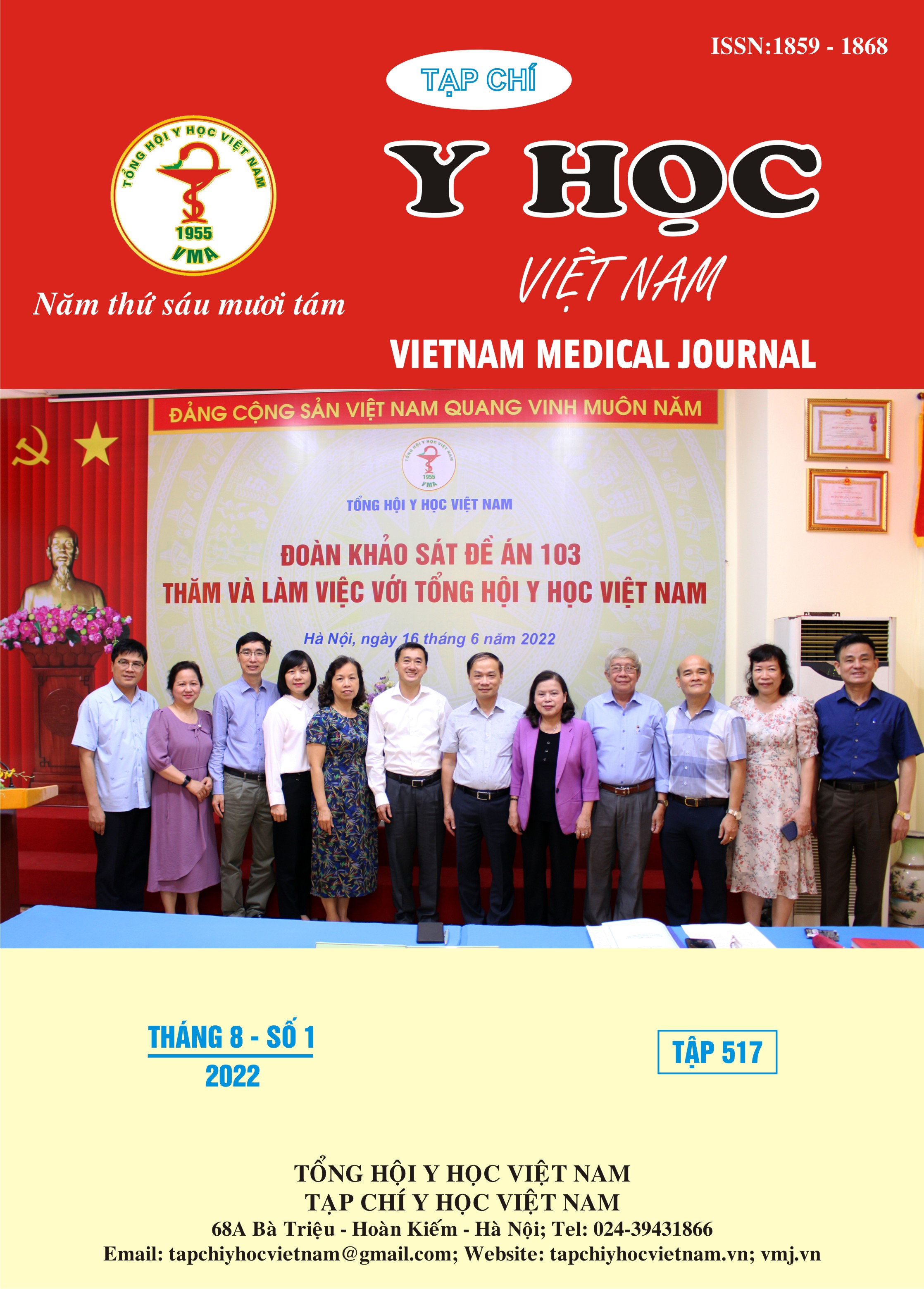THE STUDY WAS TO EVALUATE THE EFFCTIVENESS OF USING ANTIVENOM SERUM IN PATENTS BITTEN BY COBRAS AT THE NGHE AN GENERAL HOSPITAL
Main Article Content
Abstract
Venomous snakebite is a common medical emergency in our country and around the world, people bitten by snakes have a high mortality rate and severe sequelae. Venomous snakes are classified into different families, genera, and species, each of which causes different poisoning conditions. Specific treatment with antivenom is the best course of action as recommended by the literature. Objective: The objective of the study was to evaluate the effectiveness of using antivenom serum in patients bitten by cobra at Nghe An General Hospital. Subjects and methods: A prospective, cross-sectional study of 30 patients bitten by a cobra from January 2021 to September 2021. Result: The average area of necrosis decreased from 12.3 cm2 to 11.5 cm2 (p<0.05). Distant spread of edema tends to decrease after treatment with antivenom. Pain score decreased from 6.88 before treatment to 4.28 after treatment. The degree of rhabdomyolysis, CK decreased from 1023.7 to 802.3 (p<0.05). Conclusion: Anti-venom serum reduces the area of necrosis, reduces local pain and reduces CK enzymes in patient bitten by cobras
Article Details
Keywords
Cobra, Anti-venom serum, Naja.astra
References
2. R D G Theakston. (1995), The kinetics of snake bite envenoming and therapy.Journal of the Ceylon College of Physicians, 28, 42-45.
3. Chieh- Fan C, Tzeng- Jih L, Wen- Chi H et al. (2009), Apropriate antivenom does for six types of envenomations cause by snakes in Taiwan. J venom anim toxins inghiên cứu l Trop dis,V.15, n3 p 479-490.
4. Nguyễn Kim Sơn (2008). Nghiên cứu đặc điểm lâm sàng và điều trị bệnh nhân bị một số rắn độc trên cạn cắn thuộc họ rắn hổ (Elapidae) ở miền bắc Việt nam, Luận án tiến sỹ y học, Trường Đại học Y Hà Nội.
5. Nualnong Wongtongkam, Henry Wilde, Chirt Sitthi Amorn et al. (2005), A study of Thai cobra(Naja kaouthia) bites in Thailand. Military medicine; 170,4, 336.
6. OF Wong, Tommy SK Lam, HT Fung. (2010), Five- year experienghiên cứu e with Chinese cobra (Naja astra) - related injuries in two acute hospitals in Hong Kong, Hong Kong Med J, Vol 16, No 1.
7. Lê Khắc Quyến. (2003), Clinical evaluation of snake bites in Viet nam: a study from Cho Ray hospital, National university of Singapore.
8. Trịnh Xuân Kiếm, Đỗ Đình Hồ (1992), Kết quả nghiên cứu sản xuất huyết thanh kháng nọc rắn hổ tại bệnh viện Chợ Rẫy. Tạp chí Y dược học thực hành, pp. 17-19.1992.


